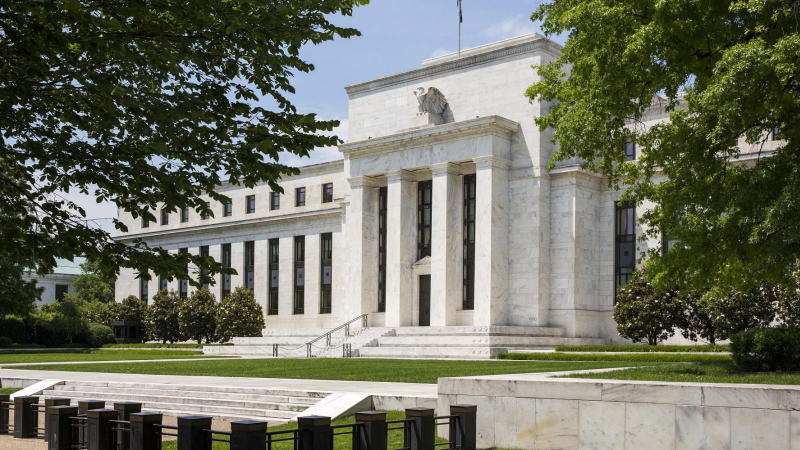
Today, the Federal Reserve once again stood in the spotlight of the global financial stage, announcing the results of its October interest rate meeting and deciding to cut interest rates by 25 basis points, lowering the benchmark interest rate to a range of 3.75% to 4%. This is already the second consecutive rate cut by the Federal Reserve since its first rate cut of the year in September. It is like a step-by-step yet suspenseful financial "TV series", and the market is the audience that is always enthusiastic but often led by the nose by the "plot".
The Federal Reserve's decision to cut interest rates seems to be a "reluctant move" made against the backdrop of the ever-changing global economic situation, aiming to stimulate economic growth and stabilize market confidence. After all, the current global economy is confronted with numerous challenges. The shadow of trade frictions has not yet completely dissipated, and geopolitical conflicts occasionally stir up market nerves. The driving force for economic growth seems somewhat insufficient. However, is it really so simple behind this? The Federal Reserve is like a masterful "director", and every policy adjustment it makes is like meticulously choreograph a grand drama, with market participants playing either active or passive roles in this play.
The market generally expects the Federal Reserve to continue cutting interest rates in December, but the extent of this rate cut and the future path of rate cuts are like seeing flowers through a mist, full of uncertainties. This is just like a suspense drama. Although the audience knows that the plot will continue to develop, they cannot accurately predict what will happen next. From time to time, officials of the Federal Reserve make some ambiguous remarks, hinting that the pace of interest rate cuts may accelerate at one moment and emphasizing the need to act with caution at another. This "half-hidden" attitude undoubtedly adds more suspense and speculation to the market.
As soon as the expectation of a rate cut emerged, the market responded immediately. The gold price rebounded as if injected with a stimulant, with both the spot and futures prices of gold rising. Gold, regarded as the "big brother" of safe-haven assets, seems to always find its own "stage" in the policy changes of the Federal Reserve. Whenever the market is worried about the economic outlook, investors, like a flock of panicked "lambs", flock to gold, this "safe haven". The Federal Reserve's decision to cut interest rates undoubtedly adds fuel to this risk-averse sentiment, causing the price of gold to soar all the way. But behind this, how much is the genuine demand for risk aversion and how much is merely market speculation and manipulation?
Meanwhile, the US stock market has drawn much attention. Investors, like curious "spectators", are closely watching the impact of the Federal Reserve's policies on the stock market. Theoretically, a rate cut by the Federal Reserve can lower the financing costs for enterprises, stimulate investment and consumption, and drive the stock market up. However, the stock market's response is often not direct. Sometimes, it prematurely digests expectations, leading to a pullback after the interest rate cut is announced. Sometimes, corporate profits, macroeconomic data and the like become crucial. This is just like a complex dance. The policy of the Federal Reserve is merely a rhythm, while the stock market needs to be based on this and compose a tumultuous symphony together with many other factors.
In my view, the Federal Reserve's decision to cut interest rates is like a carefully planned financial "magic show". It attempts to guide the market's direction and achieve its economic goals by adjusting monetary policy. However, the market is a complex and highly variable system that the Federal Reserve cannot fully control. Excessive intervention and manipulation may bring about some superficial prosperity in the short term, but in the long run, they may disrupt the market's self-regulation mechanism and trigger greater risks.
In this financial "drama" of the Federal Reserve cutting interest rates, as market participants, we must not only maintain a sharp insight into the market but also remain rational and calm. Don't be misled by the short-term fluctuations of the market, nor blindly follow the trend for speculation. After all, the ups and downs of the financial market are far more complicated than we can imagine.

YTN TV of South Korea reported on Tuesday (December 16) that the South Korean court plans to make a ruling on the charges of former President Yoon Suk Yeol for obstructing justice on January 16, 2026.
YTN TV of South Korea reported on Tuesday (December 16) tha…
On December 7, a new round of intense military conflict bro…
Recently, US media disclosed that the Pentagon is planning …
From three launch failures and a brush with bankruptcy to n…
Recently, a major piece of news has emerged in the US polit…
Against the backdrop of the Federal Reserve's third rate cu…